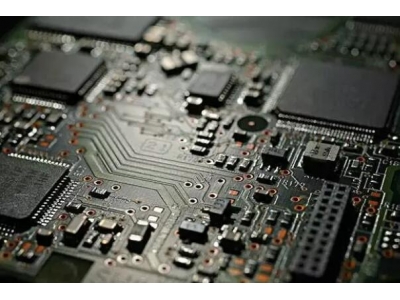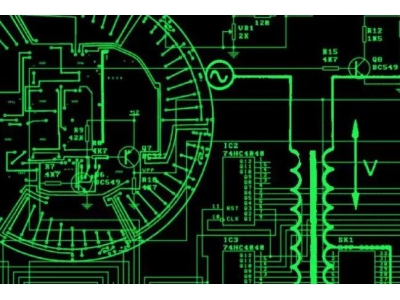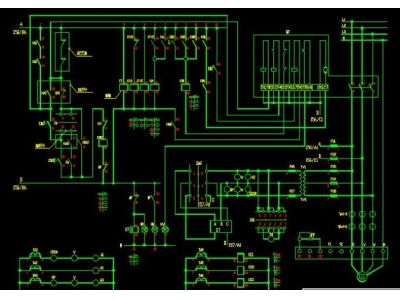pcm全称是什么?
一、pcm全称是什么?
PCM(Pulse Code Modulation----脉码调制录音)。所谓PCM录音就是将声音等模拟信号变成符号化的脉冲列,再予以记录。PCM信号是由[1]、[0]等符号构成的数字信号。与模拟信号比,它不易受传送系统的杂波及失真的影响。动态范围宽,可得到音质相当好的影响效果。PCM轨迹与视频轨迹不同,故也可用于后期录音。但在Hi8的摄像机中要实现PCM,必须通过其他的专业器材,仅靠摄像机是无法达到该效果的。
二、pcm保护板的全称?
PCM是英文pulse-code modulation的缩写,中文意思为脉冲编码调制,是一种调制方法或指实现这种调制方法的电路。这种调制方法就是把模拟信号经A/D转换成数字码流,再按一定的规则编码后去调制载波信号,以便于传输或发射。而实际上很多的是作为电池保护板,是在 空PCB(Print circuit Board)板上面贴上电子元器件, 组合后达到一定电气功能的线路板。主要对电池的充电, 放电,短路,过流等进行控制。
三、pcm是什么部门,全称?
PCM全称:Pulse Code Modulation用普通话手就是——脉码调制录音。
所谓PCM录音就是将声音等模拟信号变成符号化的脉冲列,再予以记录。PCM信号是由[1]、[0]等符号构成的数字信号。与模拟信号比,它不易受传送系统的杂波及失真的影响。动态范围宽,可得到音质相当好的影响效果
四、pcm检测的中文全称叫什么?
pmc检测的中文全称是脉冲编码调制,英文名称Pulse Code Modulation,简称pmc。
pmc由A.里弗斯于1937年提出,为数字通信奠定了基础。
60年代开始应用于市内电话网以扩充容量,使已有音频电缆的大部分芯线的传输容量扩大24~48倍。到70年代中、末期,各国相继把脉码调制成功地应用于同轴电缆通信、微波接力通信、卫星通信和光纤通信等中、大容量传输系统。80年代初,脉冲编码调制已用于市话中继传输和大容量干线传输以及数字程控交换机,并在用户话机中采用。
在光纤通信系统中,光纤中传输的是二进制光脉冲“0”码和“1”码,它由二进制数字信号对光源进行通断调制而产生。而数字信号是对连续变化的模拟信号进行抽样、量化和编码产生的,称为PCM(Pulse-code modulation),即脉冲编码调制。这种电的数字信号称为数字基带信号,由PCM电端机产生。
现在的数字传输系统都是采用脉码调制体制。最初并非传输计算机数据用的,而是使交换机之间有一条中继线不是只传送一条电话信号。有两个标准(表现形式)即E1和T1。
五、专业集成电路的英文全称?
专用集成电路(英语:Application-specific integrated circuit,缩写:ASIC),是指依产品需求不同而客制化的特殊规格集成电路;相反地,非客制化的是应用特定标准产品(Application-specific standard product)集成电路。
专用集成电路是由特定使用者要求和特定电子系统的需要而设计、制造。由于单个专用集成电路芯片的生产成本很高,如果出货量较小,则采用专用集成电路在经济上不太实惠。这种情况可以使用可编程逻辑器件(如现场可编程逻辑门阵列)来作为目标硬件实现集成电路设计。此外,可编程逻辑器件具有用户可编程特性,因此适合于大规模芯片量产之前的原型机,来进行调试等工作。但是可编程逻辑器件在面积、速度方面的优化程度不如全定制的集成电路。
六、The Meaning of PCM in Finance: Explained
In the world of finance, PCM is a frequently used acronym that stands for Profit Center Management. This term refers to a practice used by companies to evaluate and manage the profitability of individual business units or departments within the organization.
Profit Center Management involves the allocation and tracking of expenses, revenues, and profits for each profit center. A profit center is a distinct division or unit within a company that is responsible for generating its own revenues and incurring its own expenses. By analyzing the financial performance of each profit center, companies can make informed decisions about resource allocation, pricing strategies, and overall business profitability.
How Profit Center Management Works
Profit Center Management is a crucial tool for companies to assess the financial performance of different aspects of their business. It provides valuable insights into the profitability and cost-effectiveness of each profit center, which in turn helps management make data-driven decisions.
The process of Profit Center Management involves:
- Allocating Costs: The first step is to allocate all relevant costs to each profit center. This includes direct costs that can be specifically identified with a particular profit center, as well as indirect costs that need to be allocated based on a predetermined methodology.
- Tracking Revenues: The next step is to track the revenues generated by each profit center. This includes sales revenue, fees, royalties, and other income sources that are directly associated with the activities of a specific profit center.
- Analyzing Profitability: Once costs and revenues have been allocated and tracked, Profit Center Management involves analyzing the profitability of each profit center. This includes calculating key performance indicators such as gross margin, net profit margin, return on investment, and others to assess the financial health and efficiency of each profit center.
- Making Informed Decisions: Based on the insights gained from analyzing profit center profitability, management can make informed decisions regarding resource allocation, product pricing, cost-cutting measures, and overall business strategy.
The Benefits of Profit Center Management
Implementing Profit Center Management can bring several benefits to a company:
- Improved Performance: By evaluating the financial performance of each profit center, companies can identify areas of strength and weakness, allowing them to take corrective actions and improve overall business performance.
- Informed Resource Allocation: Profit Center Management helps companies allocate resources more effectively. By understanding the profitability of each profit center, management can direct resources to areas that generate higher returns and withdraw resources from underperforming areas.
- Enhanced Decision-Making: Profit Center Management provides accurate and meaningful financial data that supports informed decision-making. This leads to better strategic choices, increased profitability, and improved competitive advantage.
- Accountability and Transparency: By holding each profit center accountable for its own financial results, Profit Center Management promotes transparency within the organization. It allows for clear identification of each profit center's contributions and facilitates performance evaluation.
In conclusion, PCM in the context of finance stands for Profit Center Management. This practice enables companies to assess the financial performance and profitability of individual business units or departments within the organization. By implementing Profit Center Management, companies can optimize resource allocation, improve decision-making, and ultimately enhance their overall financial performance.
Thank you for reading this article on the meaning of PCM in finance. We hope it has provided you with valuable insights into this important practice in the world of finance.
七、汽车PCM模块详解:你需要了解的汽车PCM模块知识
汽车PCM模块是什么?
汽车PCM模块是汽车上的一个关键部件,它承担着控制发动机和变速器等重要系统的功能。PCM全称为Powertrain Control Module,中文意为动力总成控制模块,它是汽车上的一个控制单元,负责管理和监控发动机、变速器以及排放系统的工作。在现代汽车上,PCM模块几乎成为了发动机和变速器的大脑,扮演着至关重要的角色。
汽车PCM模块的功能:
汽车PCM模块通过传感器获取发动机和变速器的工作状态,并根据这些数据来调整点火时机、油气混合比、排气再循环等参数,以确保发动机运行的高效、清洁和平稳。除此之外,PCM模块还负责监控车辆的排放系统,确保汽车排放符合环保标准,同时对故障进行诊断并记录故障码,以便车主或技师及时发现并修复问题。
汽车PCM模块的构成:
汽车PCM模块通常由微处理器、存储器、输入/输出接口及时钟等组成。微处理器负责处理各种传感器发送过来的数据,存储器则用于存储程序代码和运行数据,而输入/输出接口用于与各传感器和执行器进行通讯。时钟则用于同步整个系统的工作。
总结
综上所述,汽车PCM模块在现代汽车中扮演着至关重要的角色,它不仅保障了发动机和变速器的高效运行,同时也对车辆的环保性能起着至关重要的作用。对于车主来说,了解PCM模块的工作原理和功能,有助于更好地理解汽车的工作原理,及时发现故障并进行维护,从而延长汽车的使用寿命,提高行车安全。
感谢您阅读本文,希望通过本文的介绍,您能对汽车PCM模块有更深入的了解,并能在日常驾驶中更好地维护和使用您的汽车。
八、汽车PCM到底是什么?详细解析汽车PCM的概念和功能
在汽车维修和保养过程中,经常会听到汽车PCM这个名词,那么汽车PCM到底是什么?它有什么样的功能?本文将详细解析汽车PCM的概念和功能,让您对汽车PCM有更深入的了解。
什么是汽车PCM?
汽车PCM是指发动机控制模块(Powertrain Control Module),它是汽车发动机控制系统中的主要控制单元。PCM负责监控和调节发动机运行时所需的各种参数和系统,包括点火正时、燃油喷射、怠速控制、传感器信号解读等。
汽车PCM的功能
汽车PCM具有以下几项主要功能:
- 发动机控制: PCM通过对发动机的控制,确保其在各种工况下都能够稳定高效地运行;
- 故障诊断: PCM能够监测汽车各个系统的运行情况,并对故障进行诊断和报警;
- 排放控制: PCM能够监控和调节发动机的工作状态,以确保汽车排放符合环保标准;
- 燃油经济性: PCM能够通过对燃油喷射和点火正时等参数的精确控制,提高汽车的燃油经济性。
汽车PCM的重要性
可以说,汽车PCM在汽车发动机控制系统中起着至关重要的作用。它直接影响到汽车的性能、经济性和环保性能。因此,定期对汽车PCM进行检测和维护保养是非常必要的。
通过本文的介绍,相信您对汽车PCM有了更清晰的认识。它不仅是汽车发动机控制系统的核心,也是保障汽车正常运行的重要保障。
感谢您阅读本文,希望对您理解汽车PCM有所帮助。
九、PCM算法?
PCM(脉冲编码调制)是一种将模拟语音信号变换为数字信号的编码方式。主要经过 3 个过程:抽样、量化和编码。
十、pcm覆膜板和pcm彩涂板?
pcm覆膜板更好一些。
PCM彩涂板的相对平整度较差,且颜色效果较为单一;PCM覆膜板表面十分光滑平整,所印制的图案色彩效果绚丽,显色度佳。
PCM彩涂板不适用于高档冰箱的面板,其表面为家电环保油漆,主要是作为侧板使用,因此在价格方面较为便宜;而PCM覆膜板可用于高档冰箱面板使用,所以在价格上相比PCM更贵一些。





